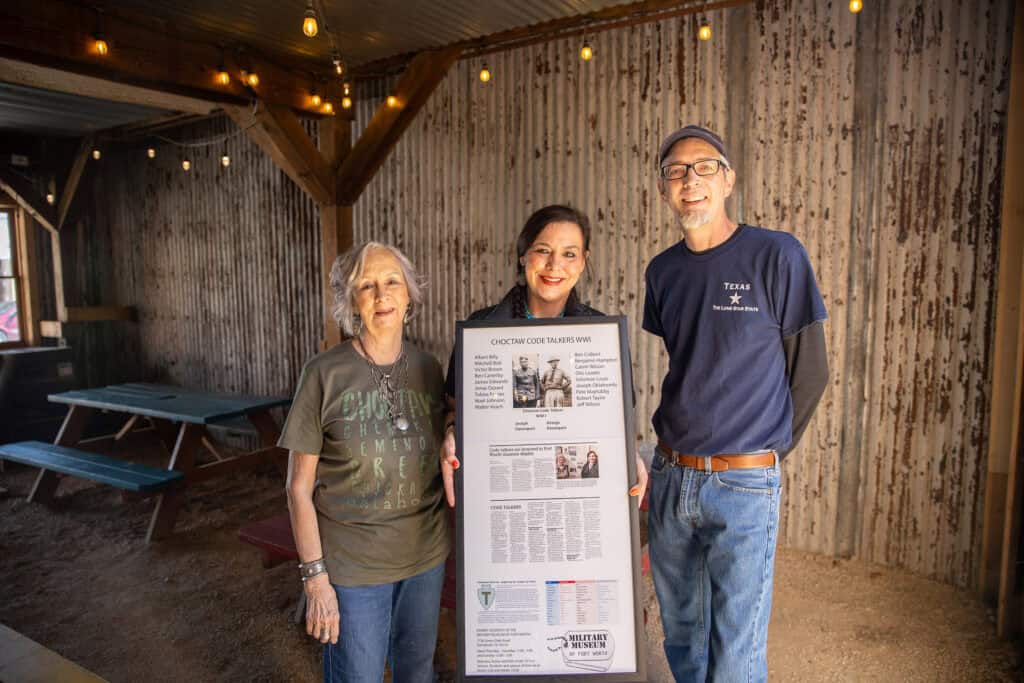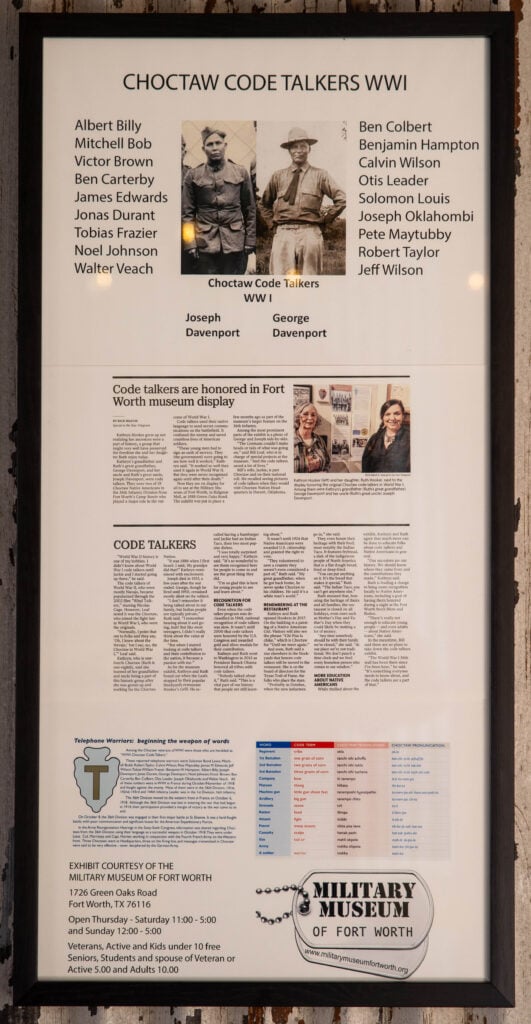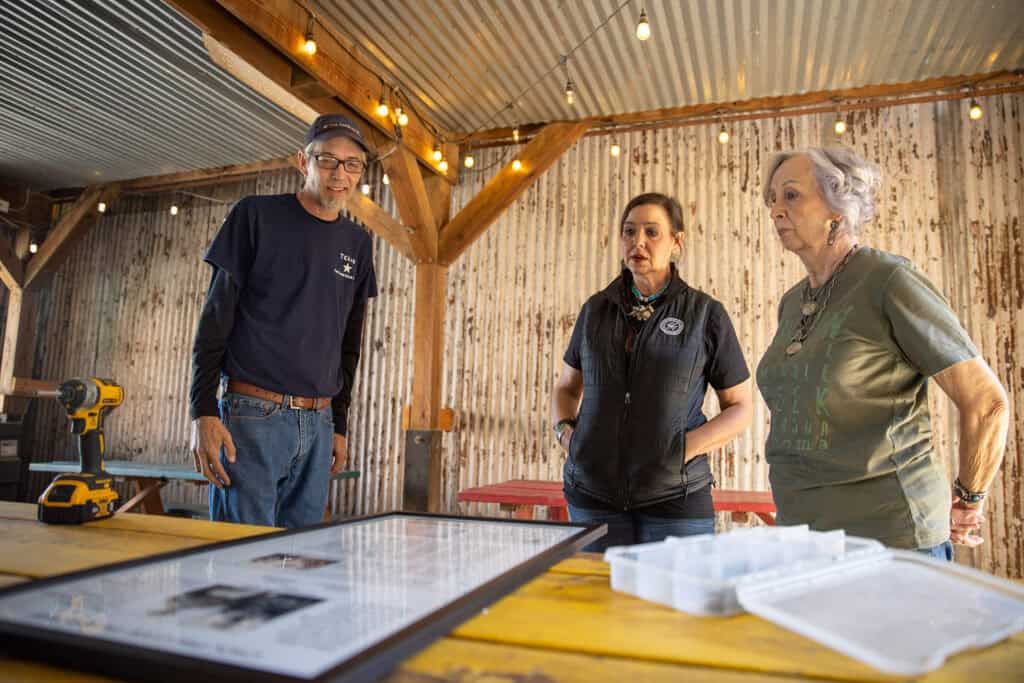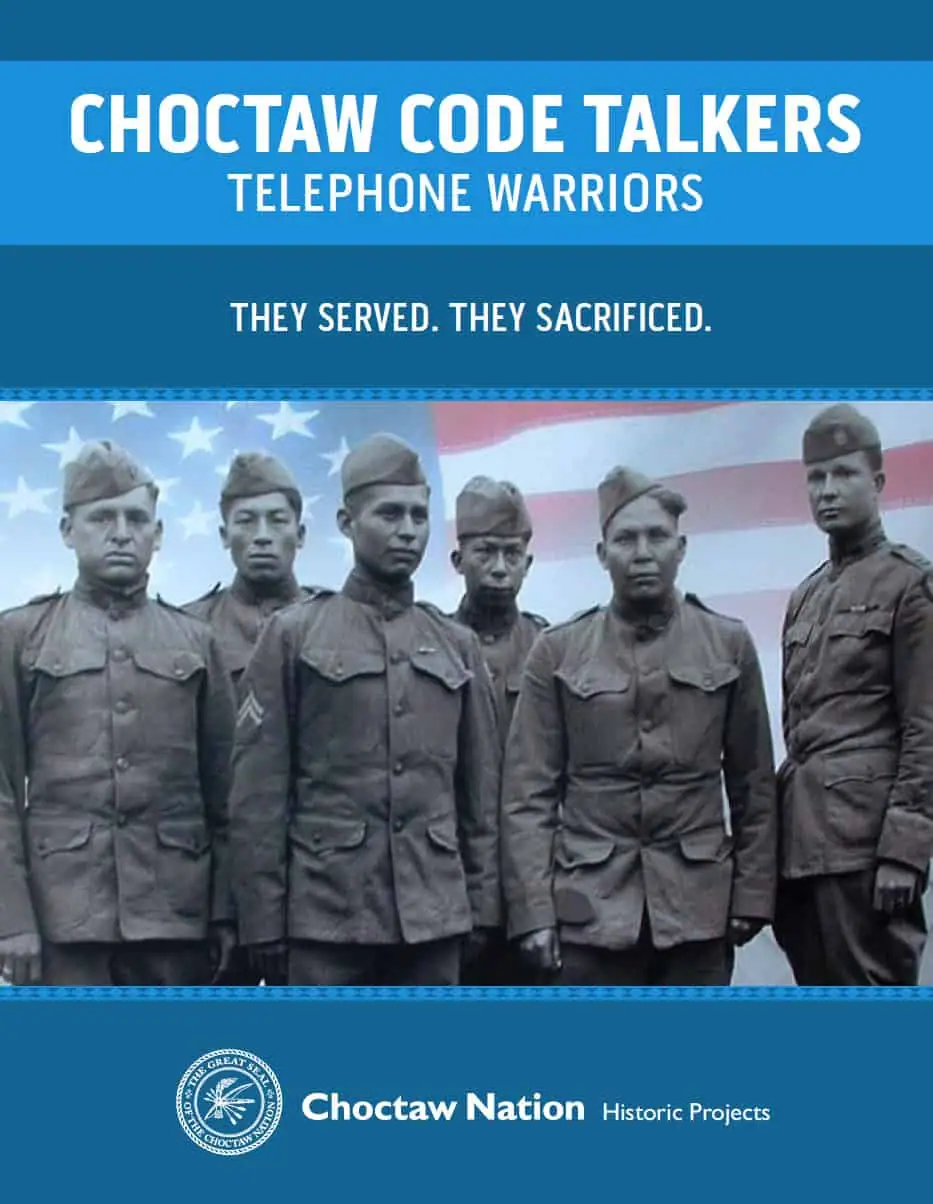
The Military Museum of Fort Worth honored the Choctaw code talkers by placing an informational display at the Choctaw-owned Hooker’s Grill in Fort Worth, Texas, on April 10.
The newly installed display holds special meaning to Kathryn Hooker and her daughter Ruth who opened Hooker’s Grill in 2017. Kathryn’s grandfather and Ruth’s great-grandfather, George Davenport and her uncle, Ruth’s great-uncle, Joseph Davenport, were two of the original code talkers. As part of the 36th Infantry Division from Fort Worth’s Camp Bowie, George and Joseph Davenport helped change the course of history during World War I.
Code Talkers played a crucial role in the victories of both WWI and WWII. By using their native language, these code talkers helped to send secure communications on the battlefield. Enemy forces could not intercept these communications, and that allowed maneuvers that would ultimately win the war.
You might have seen popular depictions of code talkers from World War II in films such as “Wind Talkers,” starring Nicolas Cage. While the Navajo indeed helped win WWII, they built on the foundation laid by the Choctaw code talkers of the 36th Infantry Division from Fort Worth.

Tyler Alberts, who works with The Military Museum of Fort Worth and placed the code talker display in Hooker’s Grill.
“At that time, with it being a static war of trench warfare, there were wires and cables running everywhere,” said Alberts. “Imagine your biggest nightmare mess of wire cable just strewn everywhere, and so people would tap into it and listen for communications so there was really no secret communication.”
Alberts said that the US military command in Fort Worth recognized that the Choctaw Language could be utilized as a language the enemy couldn’t translate. They decided to attempt to use it in battle.
On October 8, 1918, the 36th Division was engaged in its first major battle at St. Etienne, France. Three Choctaws were positioned at headquarters and three on the firing line, and messages transmitted in Choctaw were said to be very effective and never deciphered by the German Army. This code allowed for a decisive victory and further utilization of code talkers in WWI and WWII.
William Leaf is the Special Projects Director for the Military Museum of Fort Worth and a retired Major in the US Army. His wife, Jackie, is a Choctaw tribal member, and William said he remembers learning about the code talkers from visits to the Choctaw Nation Headquarters in Durant, Oklahoma.
“I have a bit of a passion for my brothers-in-arms being recognized,” said Leaf.
That passion is what has inspired him to delve into the history of the Choctaw code talkers and help to educate visitors to The Military Museum of Fort Worth as well as creating displays like the one that was installed at Hooker’s.
Choking back tears, Leaf explained why the project is so important.
“Too many folks nowadays don’t know anything about what the service members have done to give them the life they’ve got now,” he said.

Leaf is working on expanding the museum’s display to honor the Choctaw code talkers. He hopes to have a larger, more interactive display to help people understand the critical role of the code talkers.
The informational display that The Military Museum of Fort Worth provided will hang proudly in the dining area of Hooker’s Grill. Ruth Hooker said that they are honored to take the time to recognize their family.
“We are so proud of the Choctaw code talkers, and we try to educate people on it ourselves,” said Hooker. “Everybody thinks we just have a little hamburger joint, but I always say the least important thing we do is sell hamburgers. Food is the gateway to education and conversation. We do that through our Indian tacos, and now we’ll have something visual with the Choctaw code talkers.”
Hooker’s Grill is open Wednesday through Sunday and is located at 213 W Exchange Ave, Fort Worth, TX 76164.

More Choctaw Code Talker History
In the Army Reorganization Hearings in the Sixty-Sixth Congress, information was shared regarding Choctaws from the 36th Division using their language as a successful weapon in October 1918. They were under Lieut. Col. Morrissey and Capt. Horner, working in conjunction with the Fourth French Army on the Western front. Three Choctaws were at Headquarters, three on the firing line, and messages transmitted in Choctaw were said to be very effective – never deciphered by the German Army.